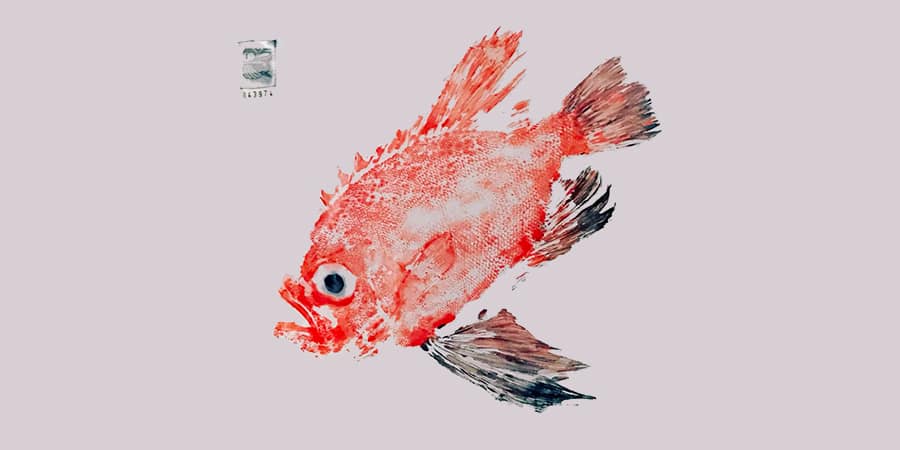Home > Life at the Cité de l’Océan > Exhibitions > Gyotaku
Gyotaku

In her early years, Delphine Simonet explored the notion of temporality through her photographic research in various ways.
Ten years ago, she turned to painting to reinterpret her own photographs. The encounter with the material allowed her to question the essence of the living and its ephemeral nature.
Through this new series, the artist goes beyond her photographic and pictorial work by exploring time and life using the gyotaku technique.
She explored this method to ultimately capture the finest details by reproducing the animal with acrylic on satin.
The resulting spectrum, like a fingerprint, faithfully conveys its biological uniqueness.
Freed from the artist’s gesture and subjectivity, the form of the specimen itself becomes the work of art. Delphine Simonet thus plays with the temporal dimension: by inventing the fossils of tomorrow, she questions the future of today’s creatures. Like a naturalist’s archive, the satin pieces are presented between two glass plates.
Delphine thus emphasizes her intention: she wants to protect them from any external influence. The creatures appear suspended in their display, as if floating weightlessly in a space isolated from the present.
Originally from Biarritz, Delphine Simonet now lives on Réunion Island. The specimens used come from small traditional fisheries or are provided by environmental protection and conservation organizations.
Gyotaku
In Japanese, “gyo” means freshwater fish and “taku” means imprint.
Logically, gyotaku is the art of creating a fish imprint on paper or fabric.
Originally, this technique was developed by fishermen to immortalize their catches and have proof of them to show their peers, at a time when photography was still in its infancy. The first known examples date back to the Edo period, around 1862.
The original method involved covering the fish with Chinese ink, applying Japanese paper to it, rubbing it by hand, and then peeling it off to reveal the imprint.
Today, more sophisticated techniques exist, including printing on other materials such as silk, or the addition of color.
Using high-quality ink and an ultra-fine support is essential to capture all the details precisely.
This beautiful art is still practiced in Japan and beyond.